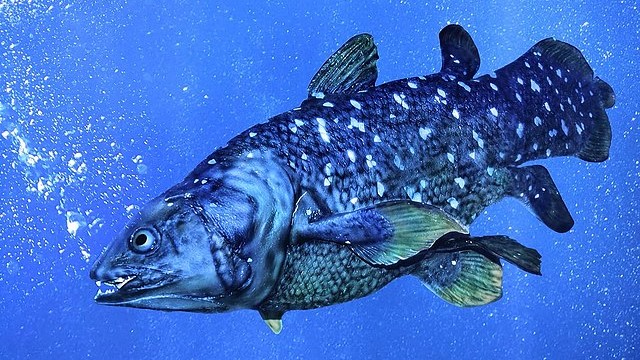By Fatima Mze Abdallah
MORONI, COMOROS — In the deep, volcanic caverns off Grande Comore’s southwestern coast, a living relic glides silently through twilight waters. Known as the coelacanth (Latimeria chalumnae), this “living fossil” has captivated scientists and conservationists for over eight decades since its rediscovery—and here in Comoros, it has become a symbol of hope and stewardship.
“The coelacanth is our island’s ancient guardian,” says Ahamada Mmadi, president of the Association for the Preservation of the Coelacanth. “We fight to protect them, for them protect us.” nationalparksassociation.org+12gombessa.tripod.com+12tehrantimes.com+12
A Sanctuary Beneath the Waves
Established in 2010, the Coelacanth National Park spans nearly 93 km² along Grande Comore’s coast, enveloping volcanic caves and reef habitats essential to the species’ survival. Under a national mandate to safeguard 25 percent of its marine and coastal zones by 2021, Comoros has positioned the coelacanth as a flagship for conservation.
The park is more than a sanctuary for ancient fish—it harbors whales, dolphins, sea turtles, and endemic species like the Comoros blue pigeon. The richness of life beneath its surface is proof that protecting one species benefits entire ecosystems.
From Accidental Catch to Global Treasure
Fishermen in Salimani once brought coelacanths to market by mistake, unaware of their rarity. One dramatic haul in 2003 drew worldwide attention and underscored the urgent need for protective action.
Since then, awareness campaigns and bycatch training have dramatically reduced unintentional captures. Comoran fishers now recognize the coelacanth as a living symbol of national pride, not a fish to be feared—or discarded.
Partners in Preservation
Co-management is the cornerstone of protection efforts. The government works closely with the Association for the Preservation of the Coelacanth, local fishers, and NGOs under the Nairobi Convention to monitor habitats, enforce regulations, and restore mangrove and seagrass zones.
Ecoguard teams—many drawn from local communities—patrol waterways and lead educational outreach in coastal villages, turning conservation from policy into daily practice.
Science Anchored in Tradition
Scientific expeditions have mapped volcanic caves at depths of 150–200 meters where coelacanths congregate. A survey in 1991 estimated fewer than 500 individuals remaining, with around 370 off Grand Comore. Today, ongoing monitoring reinforces the case for cautious optimism.
Efforts to bolster protections include expanded no-fishing zones, refined fishing gear regulations, and plans for deeper marine parks. A 2017 initiative aims to scale up such protections across three additional marine reserves.
The Ripple Effect
This is conservation with far-reaching impact. Tourists can snorkel or dive reefs alive with biodiversity while learning about the coelacanth. Local guides earn income from eco-tours; researchers visit annually, sharing knowledge and funding local stewardship. Communities are discovering that protecting the past can enrich their future.
“As we safeguard the coelacanth,” reflects Mhadji Hassani, a community warden, “we’re preserving the identity—and livelihood—of our island.”
In an ocean forced to yield its secrets, Comoros offers a rare success story. By turning accidental catches into intentional protection, this island nation is championing a living fossil—and, in doing so, lighting the way for reef conservation across the Indian Ocean.
Sources:
- Association for the Preservation of the Coelacanth (APG) gombessa.tripod.comtehrantimes.com
- Coelacanth National Park (Natural parks overview) en.wikipedia.org+3nationalparksassociation.org+3nairobiconvention.org+3
- UNESCO tentative list: Marine ecosystems Comoros en.wikipedia.org+2thegef.org+2blueexplorermag.com+2
- “Islands of the Moon” marine protected strategy, GEF/UNDP thegef.org+1en.wikipedia.org+1
- Reuters report on coelacanth discovery and fishing impact nairobiconvention.org+15tehrantimes.com+15reddit.com+15

